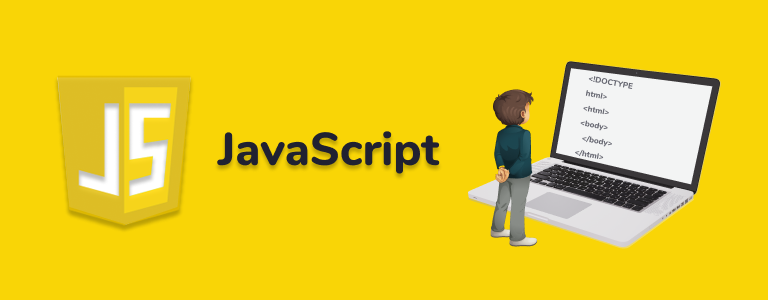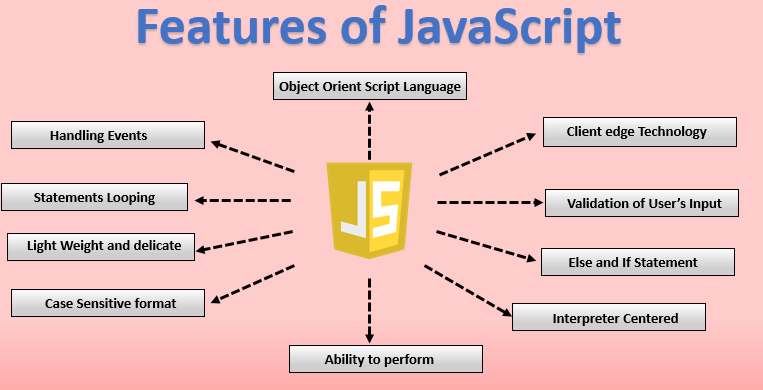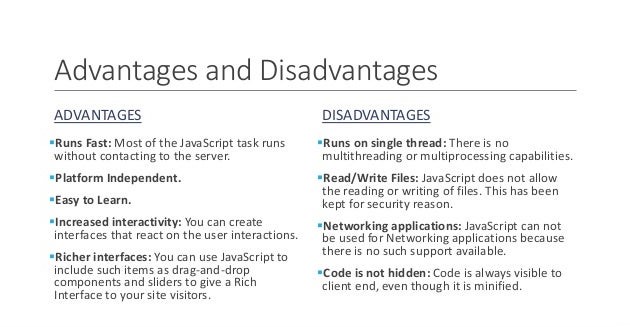What is JavaScript ?

JavaScript is a dynamic programming language that’s used for web development, in web applications, for game development, and lots more. It allows you to implement dynamic features on web pages that cannot be done with only HTML and CSS.
Why it is used?
HTML and CSS are languages that give structure and style to web pages, JavaScript gives web pages interactive elements that engage a user.
History of JavaScript
JavaScript was originally developed by Brendan Eich of Netscape Communications Corporation under the name Mocha, then LiveScript, and finally renamed to JavaScript. The change of name from LiveScript to JavaScript roughly coincided with Netscape adding support for Java technology in its Netscape Navigator web browser. JavaScript was first introduced and deployed in the Netscape browser version 2.0B3 in December of 1995. When JavaScript was added to Internet Explorer, it had to be officially called “JScript”, because Netscape owns the name “JavaScript”. The choice of name proved to be a source of much confusion.
The latest version of the language is ECMAScript 2018 which was released in June 2018.
How Does JavaScript Work?
There are two important pieces to learn about: How the web browser works, and the Document Object Model (DOM).
The web browser loads a web page, parses the HTML, and creates what is known as a Document Object Model (DOM) from the contents. The DOM presents a live view of the web page to your JavaScript code.
The browser will then grab everything linked to the HTML, like images and CSS files. The CSS information comes from the CSS parser.
The HTML and CSS are put together by the DOM to create the web page first. Then, the browsers’ JavaScript engine loads JavaScript files and inline code but does not run the code immediately. It waits for the HTML and CSS to finish loading.
Once this is done, the JavaScript is executed in the order the code is written. This results in the DOM being updated by JavaScript code and rendered by the browser.
The order here is important. If the JavaScript did not wait for the HTML and CSS to finish, it would not be able to change the DOM elements.
What Can I Do With JavaScript?
JavaScript is a full-fledged programming language that can do most things a regular language like Python can do. These include:
- Declaring variables.
- Storing and retrieving values.
- Defining and invoking functions, including arrow functions.
- Defining JavaScript objects and classes.
- Loading and using external modules.
- Writing event handlers that respond to click events.
- Writing server code.
- And much more.

What Is JavaScript Used For?
The primary use of JavaScript is to build web-based applications. Some of what JavaScript can do for the web includes:
- adding interactive behavior to web pages like zooming in and out or playing audio/video
- creating web and mobile apps, the most popular examples consist of the likes of Netflix and Uber
- building web servers and server-side applications using Node.js
- create games that operate inside the browser

5 Examples of JavaScript Applications
To gain a better understanding of what JavaScript is used for and how to implement it into your business here are some more details on just what JavaScript can do.
1. Web & Mobile Apps
JavaScript has several different frameworks for developing web and mobile apps including React Native, Ionic, and Angular. All these frameworks extend tooling to simplify development depending on what JavaScript is used for in each specific framework.
Facebook is
Facebook is one popular company that uses JavaScript to power its online community. React and the corresponding React Native are two JavaScript frameworks built by Facebook.
to power its online community. React and the corresponding React Native are two JavaScript frameworks built by Facebook.
2. Game Development
JavaScript can be utilized to develop games for web browsers. GitHub features a collection of game engines, many of them employing HTML5 as well.
JavaScript is even being used in the virtual reality industry, with the help of the WebXR Device API.
3. Server Applications
Server-side scripting carries the imminent advantage of allowing content to load without the concern for browser capacity. Decreased load times can lead to such things as improved SEO and more customer satisfaction.
This is yet another example of what JavaScript is used for. Using JavaScript’s runtime environment, Node.js, developers can create server-side applications.
4. Interactive UX
The most common example describing what JavaScript is used for involves delivering an interactive user experience (UX). JavaScript is a paramount technology for front-end development.
You can thank JavaScript for the way you navigate the web by using a drop-down arrow to scroll to the bottom of a page.
5. AI & Machine Learning Projects
JavaScript has the libraries to support development for AI-related projects as well. Tensorflow.js, for instance, is a JavaScript library for machine learning. You can build and train machine learning models using the library.
I’m a DevOps/SRE/DevSecOps/Cloud Expert passionate about sharing knowledge and experiences. I am working at Cotocus. I blog tech insights at DevOps School, travel stories at Holiday Landmark, stock market tips at Stocks Mantra, health and fitness guidance at My Medic Plus, product reviews at I reviewed , and SEO strategies at Wizbrand.
Please find my social handles as below;
Rajesh Kumar Personal Website
Rajesh Kumar at YOUTUBE
Rajesh Kumar at INSTAGRAM
Rajesh Kumar at X
Rajesh Kumar at FACEBOOK
Rajesh Kumar at LINKEDIN
Rajesh Kumar at PINTEREST
Rajesh Kumar at QUORA
Rajesh Kumar at WIZBRAND

 Starting: 1st of Every Month
Starting: 1st of Every Month  +91 8409492687
+91 8409492687  Contact@DevOpsSchool.com
Contact@DevOpsSchool.com
